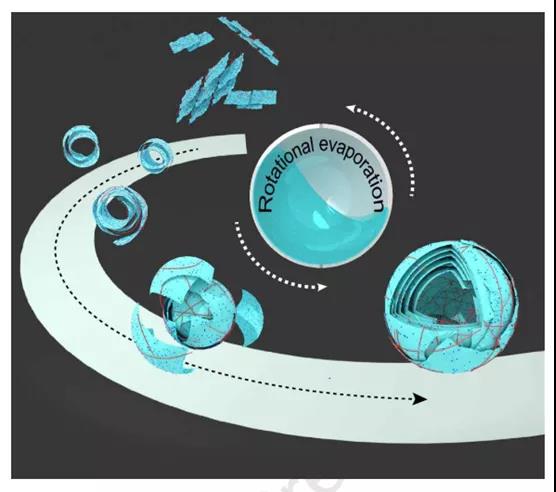NanoEnergy: Topology design MXene paper flexible lithium metal battery
QQ Academic Group: 1092348845
Detailed
【Research Background】
An electrochemical energy storage system with good flexibility, high energy density, and high safety / reliability is essential for wearable electronic devices, smart clothing, and health monitors. Lithium metal batteries (LMB) are very developed due to their high theoretical energy density. Lithium metal is considered to be a suitable anode material due to its high specific capacity (3860 mA hg -1 ) and low reduction potential (-3.04 V relative to the standard hydrogen electrode).
The 3D body has a high specific surface area surface and a porous structure, which can achieve uniform Li plating / stripping, and has a low local current density and negligible volume change, which makes the design of the 3D body structure a promising strategy. However, the thickness of the 3D composite Li usually reaches hundreds of micrometers, which challenges the efficient use of Li and the high energy density of the battery. Therefore, in the field of flexible LMB with high safety and high energy density, it is particularly important to design an ultra-thin lithium negative electrode with light weight, high mechanical strength, and simple and self-supporting method.
【Achievement Introduction】
Recently, Huazhong Agricultural University Huan Ye, Fei-Fei Professor Cao issue in internationally renowned academic journal Nano Energy published an article entitled: Topological Design of ultrastrong MXene Paper Hosted Li Ultrathin and the Enables Fully flexible Lithium Metal Batteries research paper, the study A simple spin-steam technology is reported . The topological structure of Ti 3 C 2 T x MXene thin film as the main body of Li is designed by mixing a small amount of cellulose nanofibers (CNF) . The interlocking topological microstructure between MXene flakes and CNF-assisted microsphere formation greatly improves the mechanical strength and flexibility of the resulting MXene @ CNF film. More importantly, MXene sheets with abundant Li nucleation sites show ideal affinity for Li. A flexible, ultra-thin (approximately 25 μm), self-supporting MXene @ CNF / Li composite negative electrode is realized without obvious Li dendrites, and has good cycle stability and high Li capacity. The mixed lithium negative electrode thus obtained is matched with a flexible self-supporting LiFePO 4 / cellulose nanofiber (LFP @ CNF) positive electrode, and a fully flexible LMB with high specific capacity and excellent stability can be constructed.
【Graphic introduction】

Figure 1. Schematic diagram of lithium plating on MXene @ CNF film

Figure 2. (ac) TEM image of Ti 3 C 2 T x MXene sample (dI) Physical characterization of MXene @ CNF

Figure 3. Schematic diagram of the formation mechanism of MXene microspheres

Figure 4. Li deposition on MXene film

Figure 5. (a) Constant current plating / stripping voltage curve of Li on MXene @ CNF and Cu foil (b) Corresponding Li plating / stripping efficiency (c) Constant in MXene @ CNF / Li and Cu / Li Detailed voltage curve of current electroplating / stripping characteristics (de) corresponding time period

Figure 6. MXene @ CNF / Li || LFP and Cu / Li || LFP full cell electrochemical performance
【Summary of this article】
This paper reports a topology design for the construction of ultra-thin, flexible and self-supporting Ti 3 C 2 T x MXene / cellulose nanofiber composite paper. The microspheres between the MXene sheets help to form an interlocking microstructure during the sheet sliding process, thereby significantly improving the mechanical strength and flexibility of the MXene film. In addition, this design can effectively prevent the re-stacking of MXene, thereby expanding the gap, speeding up the reaction kinetics, and further ensuring high area lithium plating and detachment capabilities and excellent rate performance. The strong interaction between a large number of sulfur-philic functional groups decorated on the surface of MXene and Li can induce uniform nucleation and no dendrite growth of Li metal. The Li negative electrode (~ 25 μm) thus obtained showed a stable CE in 250 cycles of 1 mA cm -2 and a high stability in 1300 h of 0.5 mA cm -2 . A fully flexible battery based on MXene @ CNF / Li composite negative electrode and flexible and self-supporting LFP @ CNF positive electrode is realized. A fully charged battery shows high capacity retention of more than 95.25% in about 100 cycles, showing excellent long-term stability. This work not only provides a simple, large-scale preparation method for the functionalized MXene thin film with ultra-thin, flexible and self-supporting characteristics, but also extends its practical application to the field of flexible energy storage devices.
Literature link:
https://doi.org/10.1016/j.nanoen.2020.104817
Source:
statement:
It is purely academic and non-commercial. If there is any infringement, please contact us immediately. We will delete it as soon as possible to protect the intellectual property rights of the original author.
- Previous: Researchers publish a
- Next: MXene breakthrough: Na


 mxene academic
mxene academic
